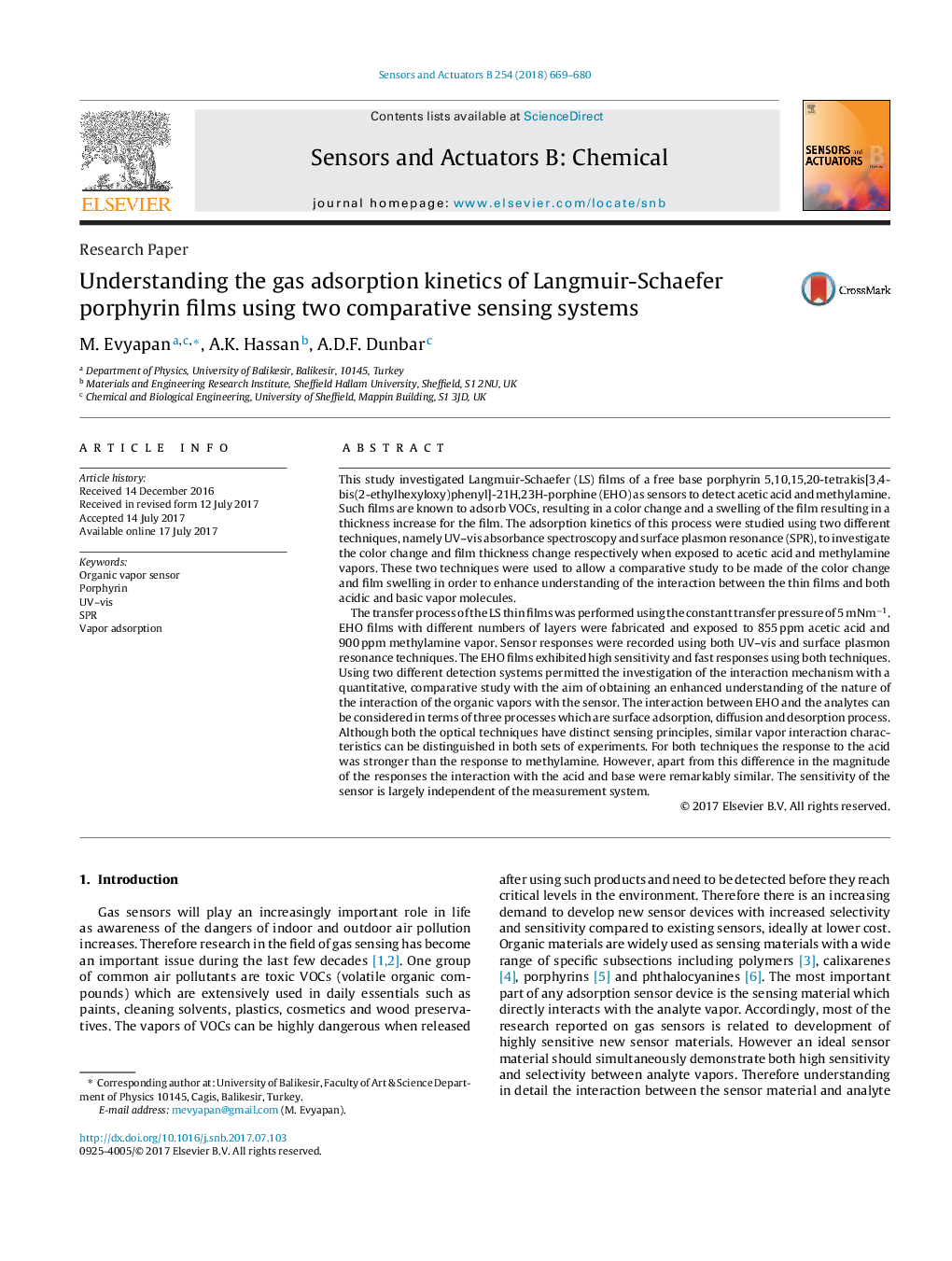| کد مقاله | کد نشریه | سال انتشار | مقاله انگلیسی | نسخه تمام متن |
|---|---|---|---|---|
| 5008722 | 1462037 | 2018 | 12 صفحه PDF | دانلود رایگان |
- Free base porphyrin based Langmuir-Schaefer (LS) films were fabricated and used as the sensing material for optical VOC sensor.
- A systematic sensor study was performed using two different techniques, namely UV-vis and SPR.
- Irrespective of the method used to transduce the response the magnitude of the responses were remarkably similar.
- The sensitivity of the sensor material is largely independent of the measurement system.
This study investigated Langmuir-Schaefer (LS) films of a free base porphyrin 5,10,15,20-tetrakis[3,4-bis(2-ethylhexyloxy)phenyl]-21H,23H-porphine (EHO) as sensors to detect acetic acid and methylamine. Such films are known to adsorb VOCs, resulting in a color change and a swelling of the film resulting in a thickness increase for the film. The adsorption kinetics of this process were studied using two different techniques, namely UV-vis absorbance spectroscopy and surface plasmon resonance (SPR), to investigate the color change and film thickness change respectively when exposed to acetic acid and methylamine vapors. These two techniques were used to allow a comparative study to be made of the color change and film swelling in order to enhance understanding of the interaction between the thin films and both acidic and basic vapor molecules.The transfer process of the LS thin films was performed using the constant transfer pressure of 5Â mNmâ1. EHO films with different numbers of layers were fabricated and exposed to 855Â ppm acetic acid and 900Â ppm methylamine vapor. Sensor responses were recorded using both UV-vis and surface plasmon resonance techniques. The EHO films exhibited high sensitivity and fast responses using both techniques. Using two different detection systems permitted the investigation of the interaction mechanism with a quantitative, comparative study with the aim of obtaining an enhanced understanding of the nature of the interaction of the organic vapors with the sensor. The interaction between EHO and the analytes can be considered in terms of three processes which are surface adsorption, diffusion and desorption process. Although both the optical techniques have distinct sensing principles, similar vapor interaction characteristics can be distinguished in both sets of experiments. For both techniques the response to the acid was stronger than the response to methylamine. However, apart from this difference in the magnitude of the responses the interaction with the acid and base were remarkably similar. The sensitivity of the sensor is largely independent of the measurement system.
Journal: Sensors and Actuators B: Chemical - Volume 254, January 2018, Pages 669-680
